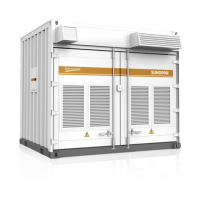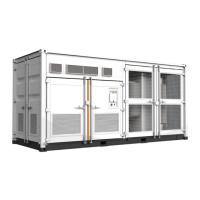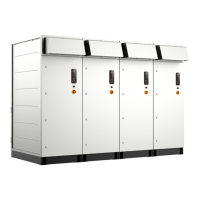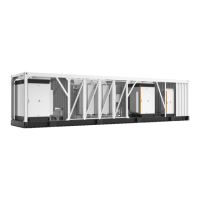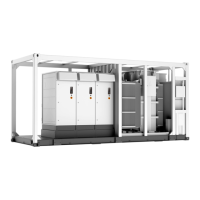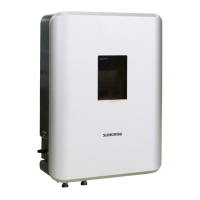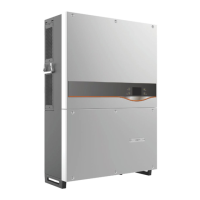68
Fault Name Fault Cause Fault Level Corrective Method
DC over-
voltage
The DC side volt-
age of the inverter
exceeds the pro-
tection threshold.
Important
Disconnect the DC switch of the
inverter and check whether the
open-circuit voltage of the PV ar-
rays is normal; If not, the PV ar-
ray configuration may be faulty.
2. Check and ensure that the AC
side transformer is connected in
a “Y” shape, and that the neutral
point is not grounded.
3. In the shutdown state, check
whether the DC voltage dis-
played on the inverter is consis-
tent with the measured value.
PV polarity
reversal
The polarity of the
positive and nega-
tive poles of the
PV strings is
reversed.
Important
Check whether the DC side ca-
bles of the inverter are con-
nected reversely.
Hardware fault
Inverter internal
hardware fault
Important
Measure the DC voltage of the
inverter and check whether a
short circuit occurs in the inverter.
AC over-current
AC side current of
the inverter is ex-
cessively high.
Important
1. Check whether cables on the
AC and DC sides of the inverter
are loose.
2. Check whether the insulation
layer of cables is damaged.
3. Check whether terminals are
short-circuited and grounded.
Overload
protection
The output of the
inverter exceeds
the load limit.
Important
Refer to the troubleshooting
method of "AC over-current”.
AC leakage
current
protection
The leakage cur-
rent sampling val-
ue on the AC side
of the inverter ex-
ceeds the protec-
tion threshold.
Important
1. Check whether the AC cable
is damaged.
2. If the LV side of the transform-
er is connected in a “Y” shape,
ensure that the neutral point is
not connected.
10 Troubleshooting System Manual

